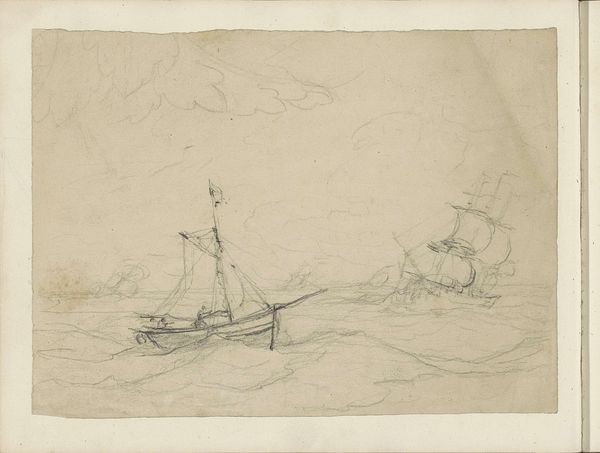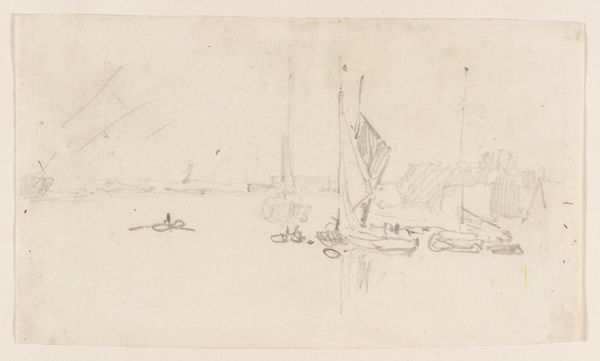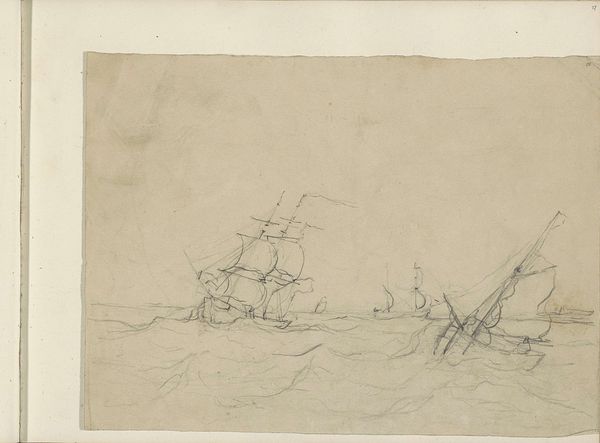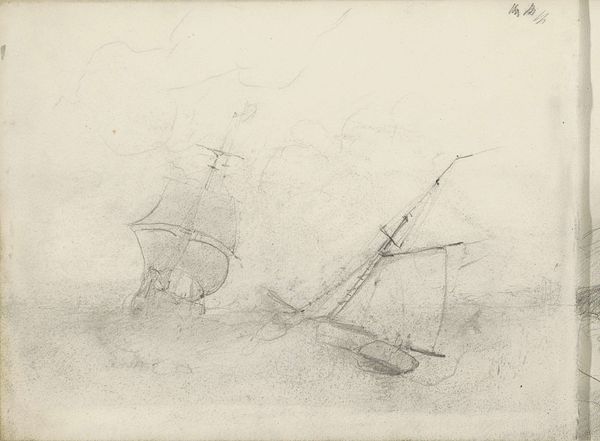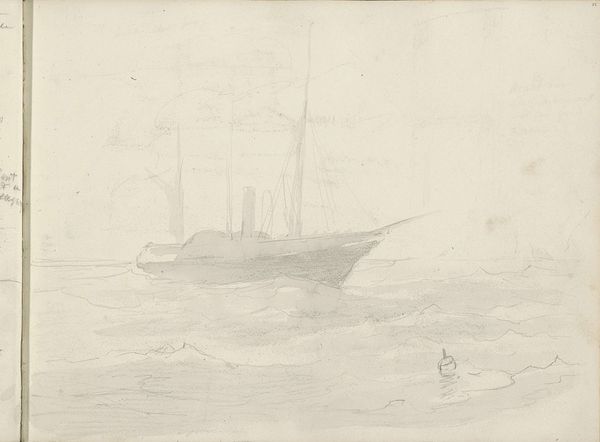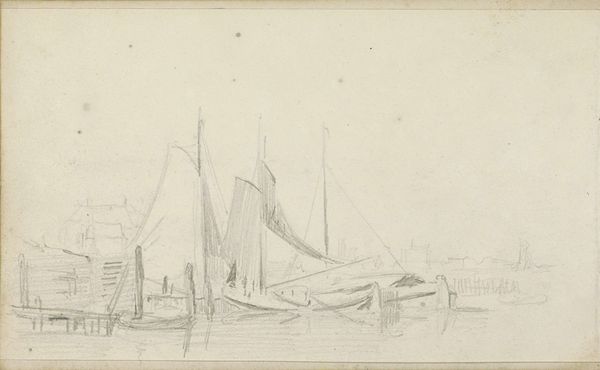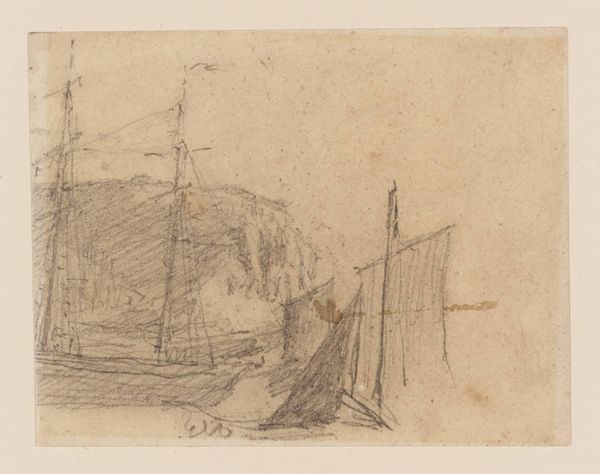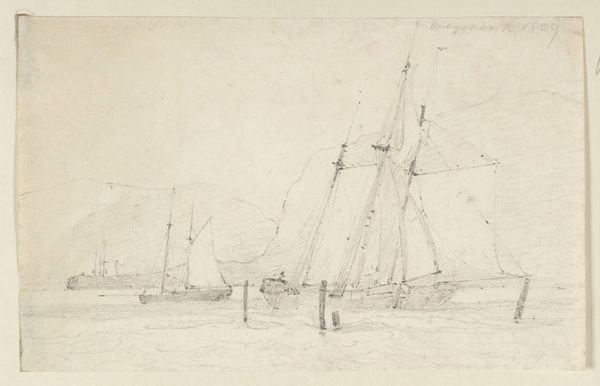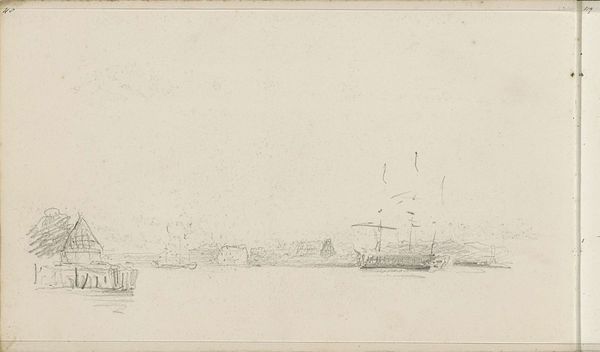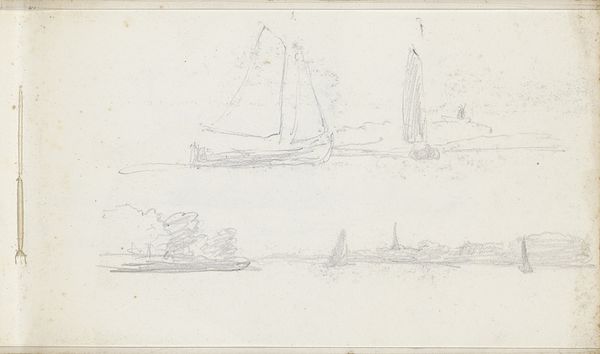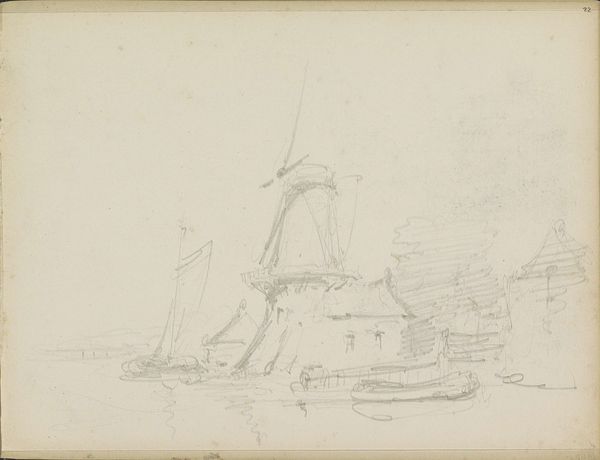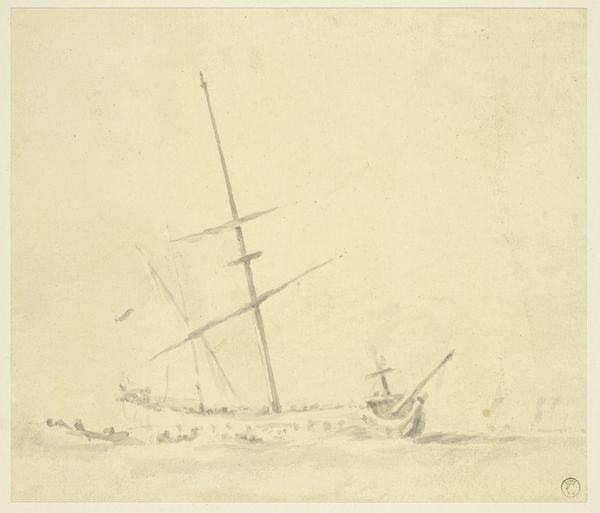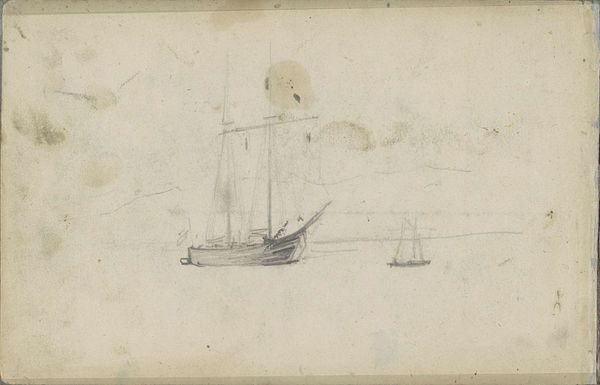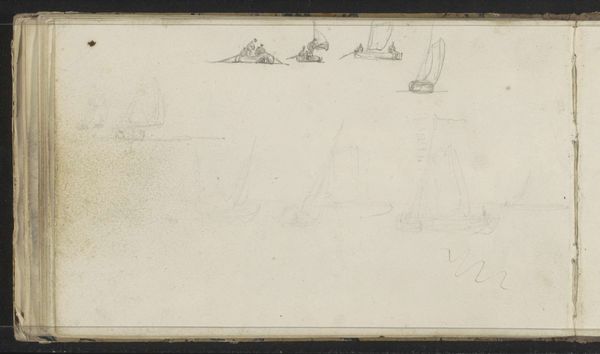
drawing, pencil
#
drawing
#
light pencil work
#
impressionism
#
pencil sketch
#
landscape
#
pencil
#
watercolor
#
realism
Copyright: Rijks Museum: Open Domain
Editor: Here we have Adrianus Eversen's "Zeilschepen op open water," dating from around 1828 to 1897. It’s a pencil drawing, a delicate sketch of sailboats on what looks like a rough sea. It feels very ephemeral and almost unfinished. What stands out to you about this piece? Curator: For me, it’s about understanding Eversen's process. A pencil sketch like this allows us to think about the labor involved in creating the final work, whether it was for himself or commissioned. Consider the availability and quality of paper and pencils during this period – they weren't mass-produced in the way we know them now. The sketch, a commodity in itself, reveals much about the means of artistic production. Editor: That's interesting. So you're less focused on the image itself and more on how it came to be? Curator: Exactly. The subtle nature of the pencil strokes hints at a deliberate approach. It suggests a society that valued not only the finished painting, perhaps in oil, but also the initial planning stages, even in its rough form. This pushes back on the Romantic idea of spontaneous creation, hinting instead at skilled labor. Where was this drawing made, do you know? What would the light have been like for Eversen to work by? Editor: The location is unknown unfortunately. This makes me consider, what does it mean for a sketch like this to survive, separate from any finished painting it might have led to? Curator: A valid point. It democratizes art appreciation; a simple sketch offers an accessible entry point to understand the complete lifecycle of an artwork, challenging our traditional understanding between "high art" and more rudimentary practices of design. Editor: So, appreciating this drawing really comes down to understanding its context of production, and how Eversen may have operated within the art world. Thank you! Curator: Precisely, it reminds us that art isn’t just about aesthetics; it's a product of labor, resources, and social circumstances. Thinking through its materiality offers new understanding.
Comments
No comments
Be the first to comment and join the conversation on the ultimate creative platform.
